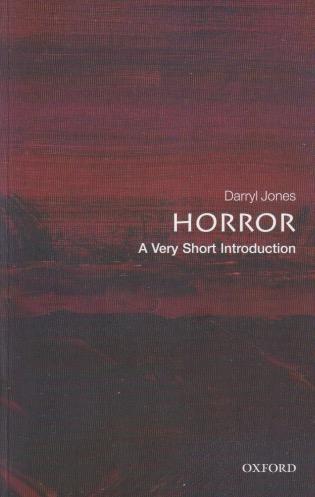
Some short books have an outsized punch. Especially when dealing with a large topic such as “horror.” This isn’t just horror movies, which could easily fill such a book, but also literature and other media as well. Darryl Jones has proven himself on this topic before and this Very Short Introduction is a showcase of what is a fascinating genre. I’ve read a number of books in this series and this stands out as one that works admirably within extreme limits—they are very short—in making good decisions about representative aspects in what is really a sprawling field of inquiry. The introduction lays the task out well and I came away from each chapter feeling inspired. Of course, not all of horror can be covered in less than 150 pages. Some may find their favorite fear unaddressed, but they’ll learn something nevertheless.
In his first content chapter, Monsters, Jones focuses on vampires and zombies. These are both forms of cannibals as they’re currently conceived, zombies being relative newcomers to most favored monster status. His next chapter, on the occult and supernatural, takes on the Devil himself before addressing satanists, demons, and ghosts. These are, of course, religious monsters. Although Jones doesn’t dwell on that aspect, the close relationship is nevertheless evident. For those of us who explore religion and horror this framing proves helpful. It’s worth pausing here to consider how all of these entities overlap a bit. As anyone familiar with ghost hunters knows, ghosts and demons may both be found haunted places, and the Devil is the head demon. Of course, horror is a fiction genre but many people believe in these entities. That brings religion and horror within the same room.
Body horror occupies the next chapter, and here werewolves come into the picture. Other aspects of body horror are also discussed, but the painful transformation of the shapeshifter is prime territory. Horror and the mind brings us to psychological thrillers and the gothic fear of madness. The topic segues nicely into science, which the next chapter covers. Not only science itself but the mad scientist. Finally, the lengthy afterword looks at where horror has gone, and may be going, in the new millennium. Something that struck me, and which brings this back into religion, is how frequently Darwin and evolution are mentioned. This concept challenged the human place in the divine hierarchy and led to much of what we think of as horror. This book is a great resource in a small package.
